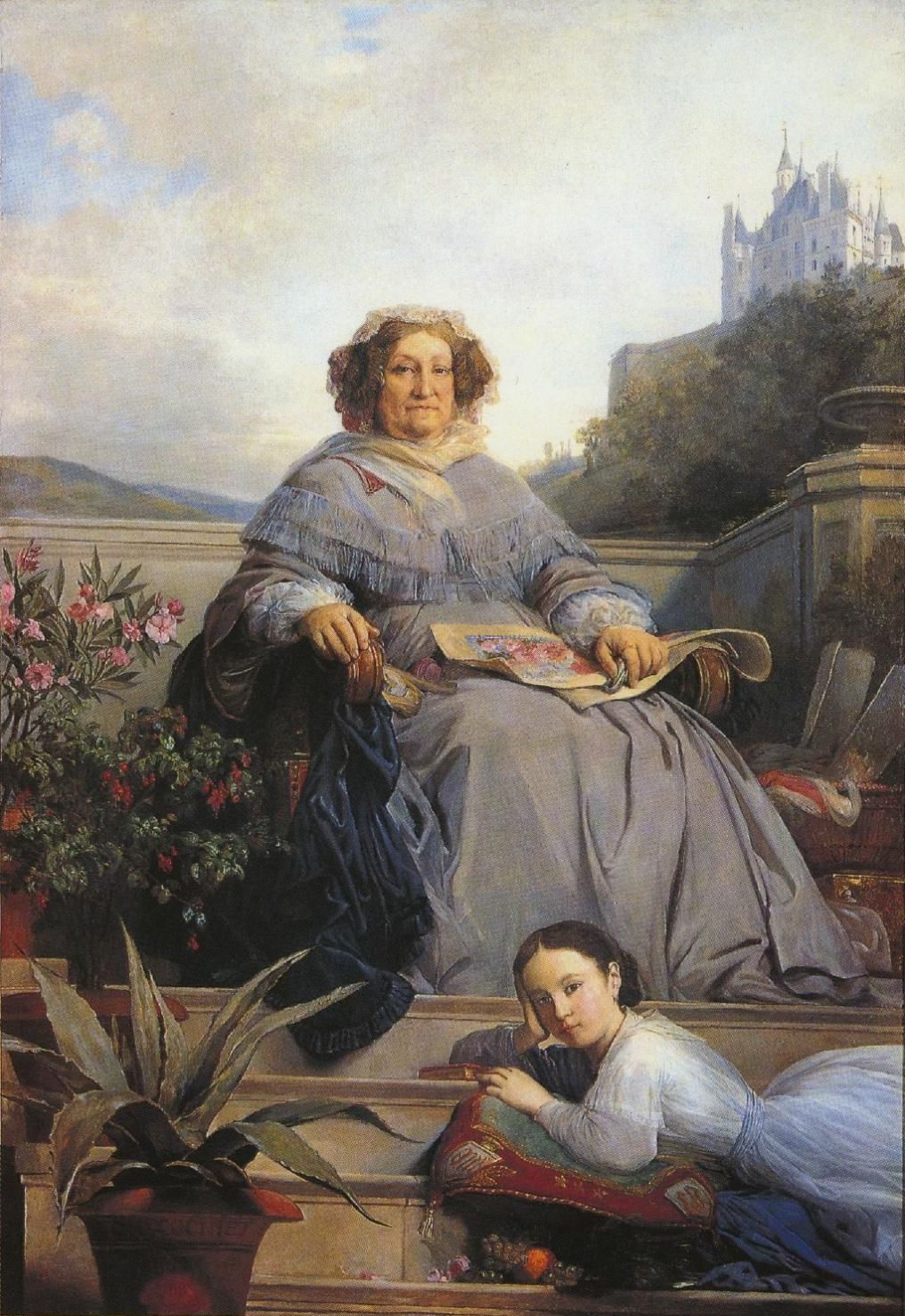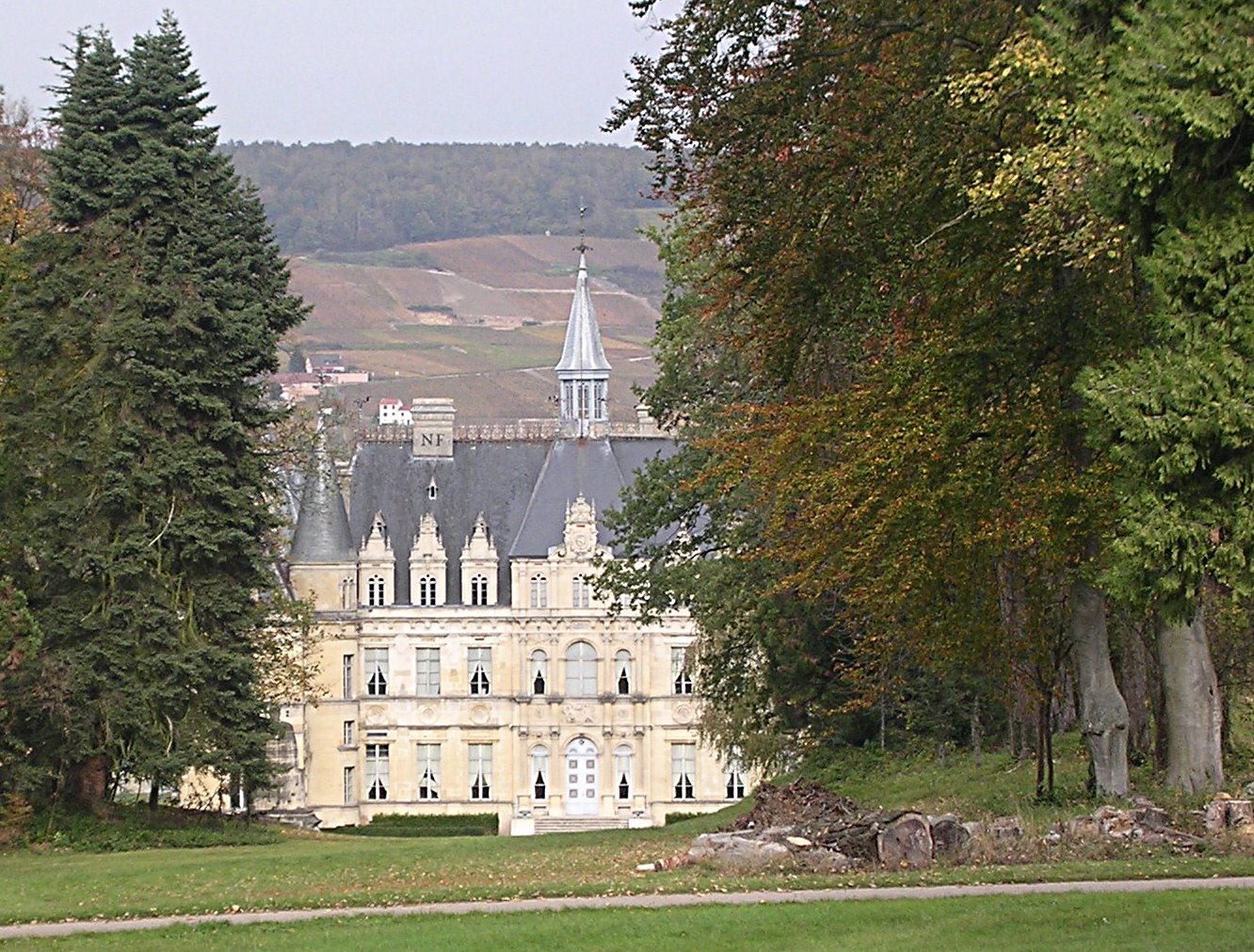 Key facts
Key facts
Located in subregion / area: Vallée de la Marne / Vallée de la Marne Rive Gauche
Vineyards and grape varieties: 252.7 hectares (624.4 acres), of which 68% Pinot Meunier, 21% Pinot Noir, and 12% Chardonnay.
Classification: “Autre cru” (84%)
Noted for: Château de Boursault.
Maps

The map is linked from Wikimedia Commons, and the geographical information originates from OpenStreetMap. The dotted white area corresponds to the vineyards, light yellow is other open terrain, orange is built-up areas, and green indicates forest.
Google Maps view with the villages in the Vallée de la Marne Rive Droite highlighted.
Clicking on a village opens a field to the left with a link to the village profile.
Neighbouring villages
On the right bank of the Marne
Northeast: Damery (part of the Vallée de la Marne Rive Droite)
North: Venteuil (part of the Vallée de la Marne Rive Droite)
Northwest: Reuil (part of the Vallée de la Marne Rive Droite)
On the left bank of the Marne
Eastsoutheast: Vauciennes
Southeast: Épernay
South: Saint-Martin d’Ablois
West: Œuilly
The village
Boursault is located on the left bank of the Marne river, which means south of the river. Two small villages or hamlets are located within the borders of the commune: Villemongeois to the east of Boursault and the château, in the direction of Vauciennes, and Villesaint to the west of Boursault, in the direction of Œuilly.
The Boursault commune covers 1645 hectares and has 450 inhabitants (as of 2016) referred to as Boursaultiers and Boursaultières.
There is a cheese called Boursault, but it has no connection to this village since it is a brand named after a Monsieur Boursault rather than an appellation cheese. Boursault the cheese comes from the Val-de-Marne department (no 94), in the outskirts of Paris, while Boursault the village is located in the Marne department (no 51). To clarify, Val-de-Marne isn’t the same as the Vallée de la Marne are within the Champagne wine region, although the Marne river does runs through them both. But on the other hand, Boursault cheese goes well with Champagne since it is a mild and creamy type of cheese and a member of the same family of cheeses as e.g. Brillat-Savarin.
Château de Boursault

Portrait of Veuve Clicquot together with her great-granddaughter Anne, who inherited Château de Boursault. In the upper right-hand corner of the portrait, the château is visible. This portrait was painted some time between 1860 and 1862 by Léon Cogniet. Picture linked from Wikimedia Commons.
Château de Boursault is an impressive palace in neo-renaissance style that was built in 1842-1848 on the initiative of Barbe-Nicole Clicquot-Ponsardin (1777-1866), from 1805 better known as Veuve Clicquot.
Earlier, this was the site of a 16th century fort used by the barons de Boursault, and then a mansion belonging to Louis Marie Joseph de Chevigné, who married the daughter of Veuve Clicquot, Clémentine Clicquot-Ponsardin (1799-1863). When her daughter Marie-Clémentine de Chevigné (1818-1877), the granddaughter of Veuve Clicquot, married in 1839, Veuve Clicquot decided to fund the construction of a new palace in this location.
The château was inherited by Marie-Clémentine’s daughter, Anne de Rochechouart-Mortemart (1847-1933, as married known as the Duchess of Uzès), following the death of Barbe-Nicole in 1866. She sold the château in 1913.
Both during World War I and World War II, the château was used as a military hospital. Since 1927, and still today, the château is used by a Champagne producer by the name Château de Boursault, which doesn’t have any connection to the Champagne house Veuve Clicquot. 11 hectares of park surrounds the château.
Boursault with surrounding vineyards as seen from the other side of the Marne river. Villemongois is visible at the left edge in the form of a few buildings, then we see Château de Boursalt surrounded by trees. In the middle of the picture, Boursault itself is located, and to the right we see Villesaint. The Marne river is partially visible in the lower part of the picture. Picture linked from Wikimedia Commons (photo Denys, 2008).
Vineyards
The vineyards in Boursault mostly consist of mild north-facing slopes with Pinot Meunier as the most common grape variety.
The current vineyard surface in the Boursault commune is 252.7 hectares (624.4 acres). There are 170.6 ha Pinot Meunier (67.5%), 52.6 ha Pinot Noir (20.8%), and 29.5 ha Chardonnay (11.7%). Current information from CIVC as of 2019, refers to the situation a few years earlier. In 1997, the vineyard surface was 220 ha. There are 100 vineyard owners (exploitants) in the commune.
Single vineyard sites
Single vineyard sites in Boursault include the following, among others:
- Les Clos des Bordes, a mostly north-facing site in the western part of the commune on the border to Œuilly, in the upper part of the slope.
- Clos du Château de Boursault is the vineyard directly at the Château de Boursault.
- Le Clos du Mariés, a north-facing site immediately to the east of the village Boursault, in the upper part of the slope.
- Le Clos du Potiers, a north-facing site immediately to the southeast of Villesaint, in the upper part of the slope.
- La Cuterie, a north-facing site to the northwest of Villesaint, in the middle-lower part of the slope. Claude Michez produces a vineyard-designated Champagne from this site, a 100% Chardonnay that is part of their oaked la Villesenière range.
- La Terre Jaune, a mostly west-facing site in the lower part of the slope, directly at the D3 road.
- Sous Boursois, a north/northwest-facing site in the upper part of the slope, on the border to Vauciennes.
Champagne producers
Champagne houses/négociants
The producer status NM = négociant-manipulant means that purchased grapes can be included in the Champagnes. NM producers can be anything from small producers that supplement their own grapes with some that they buy in, to large Champagne houses that primarily rely on purchased grapes.
- J. & Jacques Bérat (NM, Facebook page), has 12 ha of vineyards in the slopes between Boursault and Œuilly with 40% Pinot Meunier, 30% Chardonnay, and 30% Pinot Noir. The range includes a vintage Champagne composed of a majority of Chardonnay in combination with Pinot Noir (2002 is 75% Ch/25% PN, 2007 is 90% Ch/10% PN). They also produce three nonvintage varietal Champagnes named after their respective origin: Les Crayons is a Chardonnay from a site in Œuilly, Les Loges is a Pinot Noir, and Villesaint is a Pinot Meunier from this hamlet in Boursault.
- Château de Boursault (NM, Facebook page) is a producer that since 1927 is located in the château of the same name, and that uses vineyards around the château, among others. They are one of few Champagne producers with “château” in their name. (They used to claim to be the only Champagne producer in the Marne department with “château” in their name. There are other château-named Champagne producers in the Aube department.) The range includes a vintage Champagne of varying composition. The 2002 is 74% Pinot Noir and 26%, while the 2004 is a 100% Chardonnay from the vineyard directly at the château, Clos du Château de Boursault.
Champagne growers
Producer status is indicated where known: RM = récoltant-manipulant, or grower-producers. RC = récoltant-coopérateur, growers that are cooperative members but sell Champagnes under their own name.
- Raphaël Alloux (RC, Facebook page), has about 9 ha of vineyards.
- Batiste-Sennepin (RC), has 6.4 ha of vineyards in Boursault, Damery, Moussy, Vinay, Brugny-Vaudancourt, Mareuil-le-Port, Mont-Saint-Père, and Fossoy.
- D. Bérat (RM), or Dominique Bérat, has 4.37 ha of vineyards in Boursault and Œuilly (Montvoisin) and is located at the property Ferme de l’Epine.
- Michel Bérat (RM)
- Bérat-Schenk (RM), has 4 ha of vineyards and uses oak barrels. Annual production about 25 000 bottles. Not the same producer as Schenk-Bérat, but the labels are similar.
- Bouchez-Benard (RM)
- Lucien Dagonet & Fils (RM), also written L. Dagonet & Fils, member of Vignerons Indépendants. The range includes a vintage Champagne. Not to be confused with Dagonet & Fils in Hautvillers.
- Alain David (RC, Facebook page)
- Foin-Moigneau (RC)
- Le Gallais (RM, alternative website), a member of Vignerons Indépendants with 4 ha of vineyards, all of which are located within a wall-enclosed clos (that isn’t named on their website). The range includes a vintage Champagne composed of 50% Pinot Meunier and 50% Pinot Noir (refers to the 2008 vintage). Below a video presenting the producer (French audio):
- André Gilbert
- Husson-Joliet (RM), whose range includes a vintage Champagne. The company name is Jean-Pierre Husson.
- Michel Laval (RC, Facebook page)
- Claude Lemaire (RM), also written as Patrice Lemaire on the labels. Has just under 5 ha of vineyards and uses oak barrel vinification for some Champagnes. The range includes a vintage Champagne which is 100% Chardonnay. The nonvintage Blanc de Blancs is a Chardonnay from the site La Terre Jaune in Boursault.
- Lemaire Rasselet (RM), whose range includes a vintage Champagne.
- Jean-Pierre Lété (RC, Facebook page), whose range includes a vintage Champagne composed of 60% Chardonnay, 30% Pinot Noir, and 10% Pinot Meunier (refers to the 2008 vintage). Not to be confused with Pierre Lété in Damery.
- Claude Michez (RM), a member of Vignerons Indépendants with a bit more than 4 ha of vineyards, mostly in Boursault but also in Mardeuil and Cuis (in the Côte des Blancs). The range includes the vintage Champagne Cuvée d’Antan composed of 1/3 each of Chardonnay, Pinot Meunier, and Pinot Noir (refers to the 2009 vintage) which has old-fashioned string closure. Also sells Champagnes under the name:
- la Villesenière (Facebook page), where oak barrels are used for all cuvées. The range includes the white blended Harmony, the rosé Saignée, and a vineyard-designated Champagne named Les Cuteries, consisting of 100% Chardonnay from the site La Cuterie in Boursault.
- Quencez-Talbot
- Schenk-Bérat (RC). Not the same producer as Bérat-Schenk, but the labels are similar.
- Stéphane & Fils (RM)
- de Villepin (RC), has 7 ha of vineyards. The property originates from the Ferme de Boursois (which is located in the upper part of the slope between Boursault and Vauciennes), which used to belong to the Duchess d’Uzès, but who sold the property in 1912, i.e., around the same time she sold the Château de Boursault. The company address is in Saint-Martin d’Ablois, though.
Comment: the list may not be complete.
Cooperative
When bottles are sold directly by a cooperative the producer status is given as CM = coopérative de manipulation, as opposed to RC when sold by a cooperative member under their own name.
- Coopérative Vinicole de Boursault is a cooperative with 54 members with a total of 37,93 ha of vineyards. It is one of the 82 cooperatives that are members of the major cooperative Centre Vinicole Champagne-Nicolas Feuillatte (CVC-NF), with its main facilities in Chouilly.

Villesaint, a small village that is located just east of Boursault but within the borders of the Boursault commune, with surrounding vineyards. In the distance, vineyards on the right bank of the Marne river are visible. Picture linked from Wikimedia Commons (photo Denys, 2007).
Links
- Wikipedia about this village in English, in French.
- Wikipedia about Château de Boursault in English, in French.
- (The Boursault commune doesn’t have a website.)
- UMC’s village profile of Boursault.
- Vineyard map of Boursault at weinlagen-info.de.
- The Swedish version of this post.
© Tomas Eriksson 2015-2019, last update 2019-03-18


